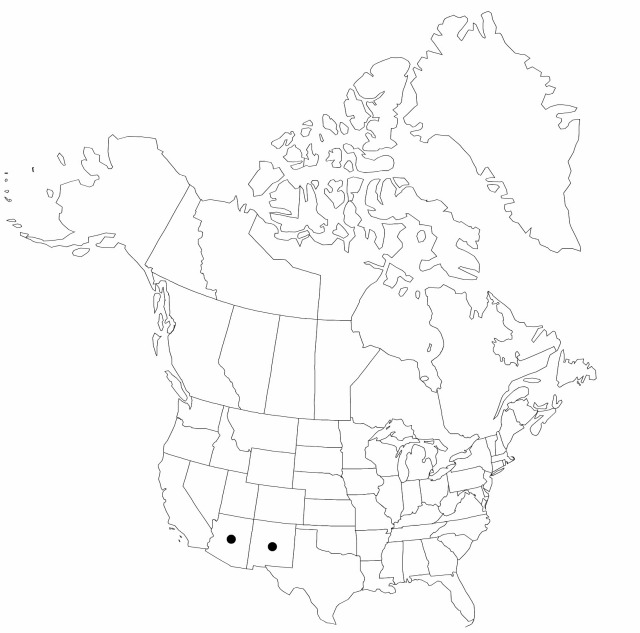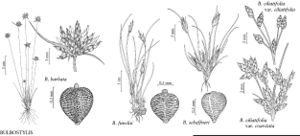Bulbostylis funckii
Bull. Misc. Inform. Kew, addit. ser. 8: 26. 1908.
Herbs, annual, densely cespitose, scapose, delicate, low. Culms 5–10(–15) cm. Leaves 1/2 as long as to slightly exceeding scapes; sheaths stramineous to reddish, dilated, strongly ribbed; blades filiform, 0.5 mm wide, flat or involute, glabrous, margins distantly scabrid. Inflorescences: spikelets of 2 sorts, one sterile, 1(–2) atop filiform scapes or short-stalked to sessile at plant base, red-brown with green midribs, lanceoloid to lance-cylindric, 5–7 mm; the other fertile, the florets developing in sheath axils at culm base; leafy involucral bracts 1, appearing as extension of culm, or absent. Spikelets: scales of sterile spikelets lanciform, keeled, midrib excurrent at mucro; fertile scales saccate, strongly ribbed, distended by achenes. Flowers: stamens 2; anthers narrowly oblong, 0.5 mm. Achenes pale, lustrous, broadly trigonous-obovoid to subglobose, the fertile 1.5 mm, the sterile 1 mm, faces slightly convex, rugulose, papillose; tubercle a small depressed or conic button. 2n = 20.
Phenology: Fruiting all year.
Habitat: Sandy disturbed sites such as roadbanks, fields, meadows, town lots, and pastures, sometimes weedy in open sandy land
Elevation: 0–3000 m
Distribution

Ariz., N.Mex., Mexico, Central America, South America.
Discussion
Bulbostylis funckii is the only heterocarpous species in Bulbostylis, the achenes of proximal spikelets being nearly twice as large and more tumid than those of aerial spikelets.
Selected References
None.
